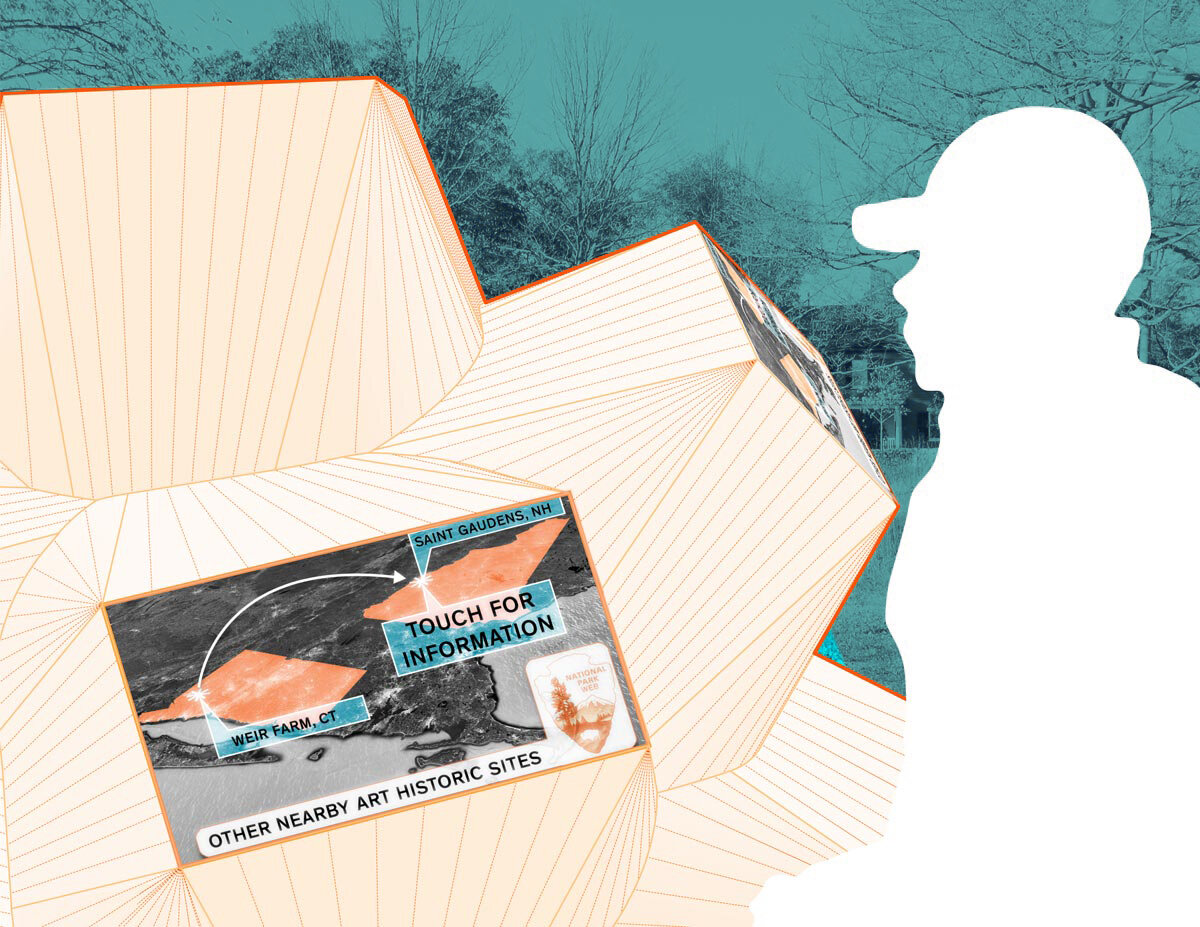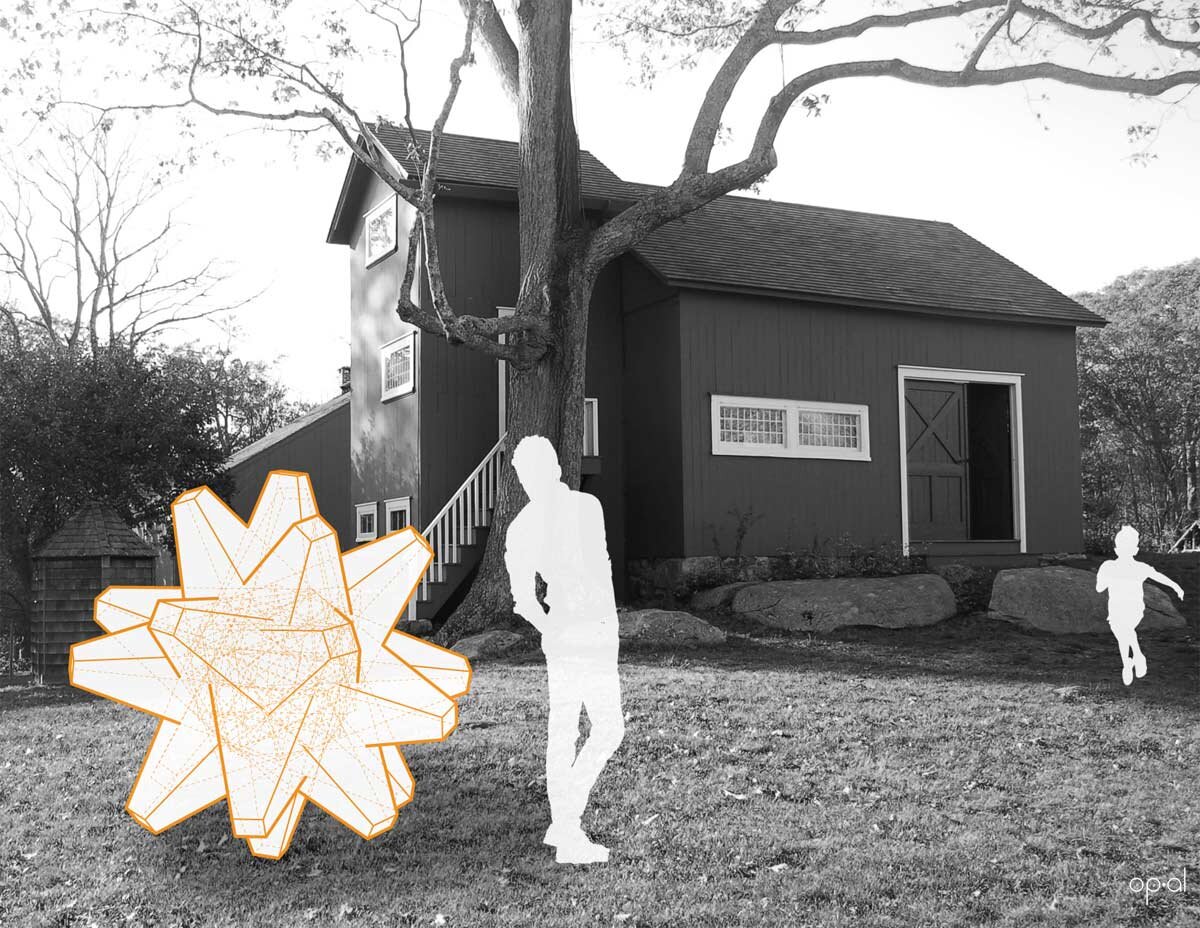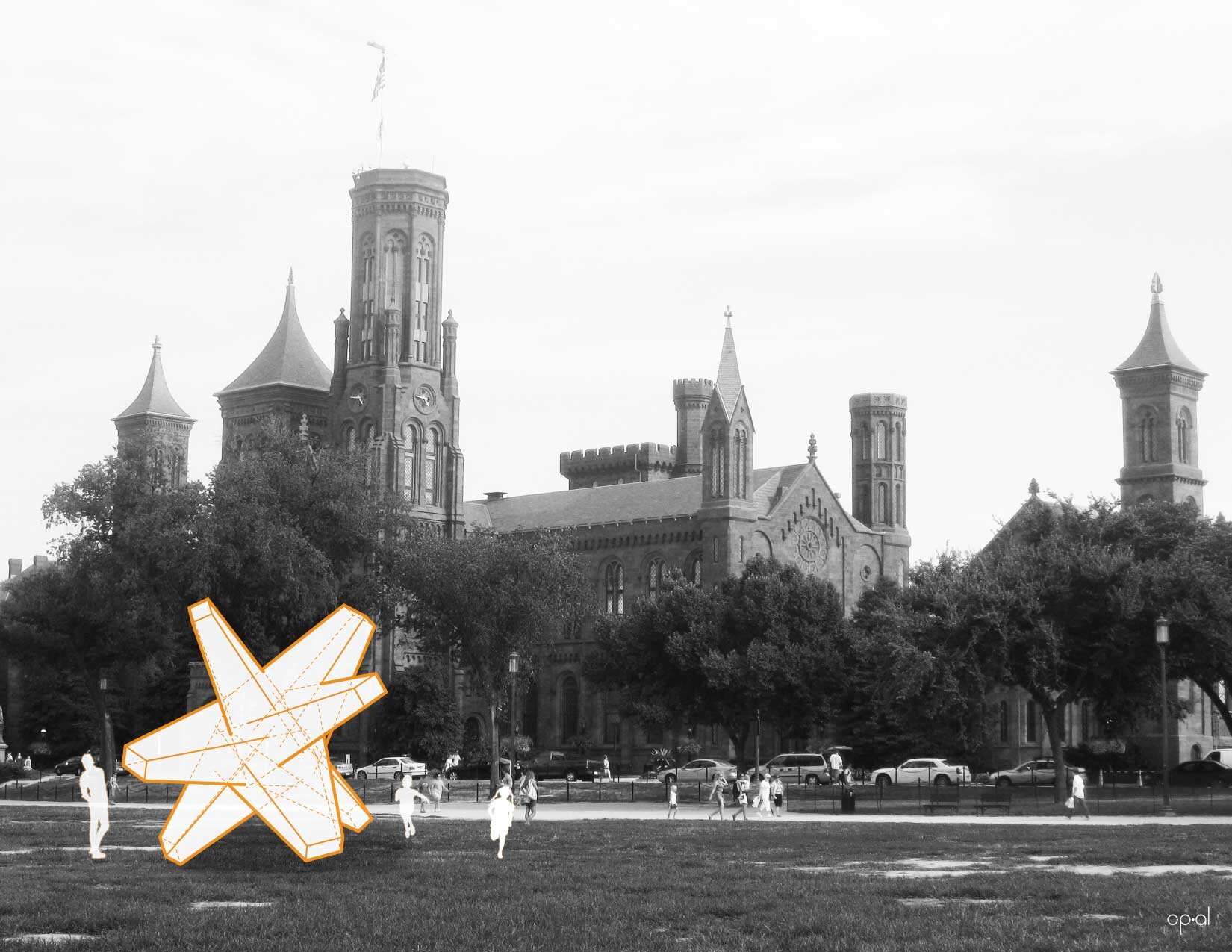The National Historic Parks and Sites of America, selected for preservation by the National Parks Service, are places comprised of a diverse range of moments of captured history and ecology. These heterotopic spaces exist outside of our temporal reality providing a condition of cognitive reflexivity of our own time and space. However, unlike other Heterotpias described by Michel Foucalt’s such as the Museum or the Library that remain frozen in time, the National Parks are in a state of continual evolution and change, both ecologically and historically. As such, the cognitive image of the historical landscape is in a constant state of flux, and this very nature of change has the opportunity to be layered into the programmed experience of the park.
A System of Objects
Our proposal utilizes a system of objects deployable in a three-scaled design approach to raise awareness of the activities and programs offered by the National Parks System at Historic Sites. Simultaneously, these objects allow visitors to selectively re-define the historical site experience through activity and play- focusing our attention on the changing interpretations of historical places.
/ Drawings
At the scale of the urban-region, deployment of iconic informational kiosk objects within the city center draw attention to the greater regional-park and historic site amenities. These objects are movable and deployed to various culturally relevant locations tying thematically to other programs ongoing at the outlying Historic Sites. In addition to greater awareness, these kiosks will promote the dispersement of urban park tourism to similar cultural offerings of the park system outside the edge of the city.
At the mega-regional scale, the network of objects placed in cities, National Historic Sites + National Historic Park sites raise awareness about the similarly themed National Historic Parks, Sites + Landmarks in addition to sites listed on the National Register of Historic Preservation in order to foster a web of relevant opportunities to the visitor within the greater mega-region.
As a result of this greater connectivity, this thickened web of parks effectively creates several inter-regional cultural park institutions. An example of this potential might be the Saint Gaudens + Weir Farm National Historic Sites,. both of which are owned and operated by the National Parks Service. These sites, lying 150 miles apart, house small preserved art studios from the earlier half of the twentieth century. Connecting these sites, along with other contemporary National Park’s Artist residencies, as well as NRHP artist houses would create a large networked museum experience that operates at the inter-regional scale.
/ Locations
/ Project Team
Jennifer Birkeland, Jonathan A. Scelsa
/ Collaborators
/ Hiroshi Jacobs, HiJAC; Laura Knott, John Milner Associates; Parabox Labs; James Willeford, Cinescapes Design
/ Project Info
/ Project Type - Ideas Proposal
/ Client - The Van Alen Institute
/ Project Year - Fall 2014




